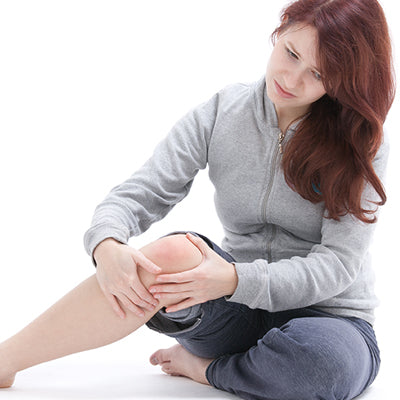
Restless Leg Syndrome: What Causes It, and How to Relieve It
Restless leg syndrome (RLS) is a disorder of the nervous system which causes the urge to move the legs more than normal. This urge usually occurs at night, making this a sleep disorder, as well.
What causes RLS?
In many cases, doctors don't know the cause. In others, causes of restless leg syndrome include:
- chronic disease such as Parkinson's, kidney failure or diabetes
- Medications, such as anti-nausea or anti-depressants
- Pregnancy
Other factors, such as sleep deprivation or alcohol use, can trigger or worsen the symptoms.
What are the symptoms?
There are a variety of symptoms associated with restless leg syndrome, including:
- leg pain
- cramps
- tingling
- itching
- burning
- aching
Because the main symptom is restless legs at night, sufferers often deal with insomnia as well, which can make them drowsy, irritable and agressive during the day.
It usually starts slowly, and worsens with time. Occasionally, RLS can affect the arms, too.
Restless legs treatment
Restless legs relief isn't hard to find. There are plenty of remedies available, that work individually or in combination with other treatments.
It's possible to get too much of a good thing, however. If you intend to supplement your vitamins and minerals, you should check with your doctor first. Get blood work done to find out exactly what you're deficient in and work with your doctor to find out how best to supplement.
- Take a warm (but not hot) bath 30-60 minutes before bed. The drop in temperature after you get out will help you drift off.
- Sleep in a cool bedroom. A cool room makes it easier to fall asleep. Lower the a/c, add fans, take blankets off the bed, or consider sleeping nude to lower your body's temperature.
- Use a white noise machine or app to cover sounds that might wake you or keep you awake.
- Use room-darkening drapes or a sleep mask to keep outside light from keeping you awake or waking you up.
- If you snore, consider using nasal strips or other snore relief products.
Resources:
https://www.webmd.com/brain/restless-legs-syndrome/restless-legs-syndrome-rls#1
https://www.medicinenet.com/restless_leg_syndrome/article.htm
https://www.healthline.com/health/restless-leg-syndrome/treatments
https://www.prevention.com/health/home-remedies-for-restless-leg-syndrome
https://www.motherearthliving.com/health-and-wellness/restless-leg-syndrome-herbal-remedies


 {{/image.src}}
{{/image.src}}





